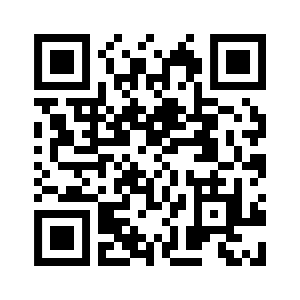
The “American Dream” is a legendary ideal.
It’s a clarion call to prosperity and fulfillment, however one chooses to define such success.
That’s why practically everyone talks about the American Dream — from famous astronauts and artists, to renowned activists and architects.
And while the American Dream is constantly being chased, it’s also being relentlessly critiqued. People often wonder if the dream is still alive, and if its ideals can actually be achieved.
That’s especially true right now, two years into a pandemic that has harmed economies, separated families, and increased global rates of depression and anxiety by 27%.
Is the American Dream still attainable? And more importantly, what does it look like for immigrants in 2022?
To answer those questions, we must look to the past to better understand our present condition.
Defining the Dream
The concept of the “American Dream” wasn’t coined until 1931.
In fact, the term was first used in historian James Truslow Adams’ book, “Epic of America.” According to Adams, the American Dream represented “opportunity for each according to his ability or achievement.”
And while the American Dream has often become synonymous with material gain, Adams noted that it ultimately pertains to fulfilling one’s destiny, no matter the challenge:
“It is not a dream of motor cars and high wages merely, but a dream of social order in
which each man and each woman shall be able to attain to the fullest stature of which
they are innately capable, and be recognized by others for what they are, regardless of
the fortuitous circumstances of birth or position.”
In other words, the American Dream is the active pursuit of “life, liberty, and happiness” as denominated in the Declaration of Independence.
But as we all know, the road to enjoying the American Dream is different than it was in 1931, and even more so than it was in 1776.
A Brave New World
Technology has totally shifted the fabric of society.
For one thing, the internet unlocked the gates of information. One quick Google search will give you what you want, when you want it.
The immediacy of the modern world has created opportunity, impatience, and unprecedented visibility. The rise of social media established a 24/7 live stream of others living out their version of the American Dream for all to see.
Ironically, though we’re intensely connected through our smartphones and messaging apps, culture has never been more disconnected than now.
After all, the COVID-19 pandemic enforced extended periods of isolation around the world. As a result, the remote workforce became a fixture of the modern economy.
In 2015, little more than 3% of the American population worked at home. In 2021, nearly 60% of employees worked at home — a remarkable 159% growth in remote work in just 12 years.
Nowadays, the road to the American Dream isn’t taken via train tracks, bus routes, and highways. Instead, it’s simply the distance between the kitchen and the desk.
This remote reality has given rise to another trend: the burgeoning “gig economy,” which has grown rapidly over the last few years. Americans are juggling more part-time jobs — more “gigs” — than ever before.
And why not? Liberated from the need to be physically present at a 9-to-5 job, Americans have more time and flexibility. And thanks to the gig economy, they now have multiple streams of income that contribute about $1 trillion to the U.S. economy each year.
While gig workers now represent 35% of the total workforce (up from 14% just 8 years ago), half of the U.S. workforce will be freelance contractors by the end of 2023.
The Cost of Living
The economy has been quite resilient throughout the pandemic.
After surviving major selloffs in March 2020, the markets rebounded throughout 2020 and 2021, when 401(k) balances hit record highs.
Despite these positive trends, rising inflation has undermined the economic prosperity of many Americans.
Studies show the average household is spending an extra $250 a month — or $3,000 a year — thanks to inflation. While experts anticipate a coming period of disinflation, consumers have had to get creative to protect their individual futures.
In addition to exploring the gig economy, many Americans have entered the stock market to offset the ravages of inflation. Last spring, The Wall Street Journal reported that “stockholdings among U.S. households increased to 41% of their total financial assets in April, the highest level on record.”
Indeed, many consumers recognize that the market isn’t merely a place for speculation, but it’s a safe haven to defend their dollars against depreciation.
To that end, an increasing group of Americans are also turning to cryptocurrency investments. Nearly one-third of millennials currently trade crypto, and by the end of the year, over 50 million Americans are expected to enter the blockchain-based market.
Their rationale is simple: cryptocurrencies like Bitcoin can’t be manipulated by a central bank. Therefore, their purchasing power will retain greater value while the U.S. dollar depreciates.
While many consumers remain skeptical of crypto, its ascendancy opens a new avenue towards economic freedom.
Moving Forward
The American Dream is alive and well, especially for immigrants. A quick glance at new business statistics affirms this.
In fact, studies show that immigrants are more likely to become entrepreneurs than U.S.-born citizens. And while immigrants comprise roughly 13% of the American population, they account for over 20% of the self-employed workforce.
Better yet, over 55% of America’s billion-dollar startups were founded by an immigrant.
Ultimately, while the American Dream is a collective ideal, it’s comprised of individual visions for prosperity. Your dream for tomorrow is as valid as anyone else’s, and it must be protected at all costs.
At uLink, we recognize that while you’re pursuing your own dreams while supporting your loved ones back home. That’s why we strive to provide great exchange rates and fees starting as low as $0 — so you can send as much money back home as possible.
Miles from home — just moments away with uLink.









